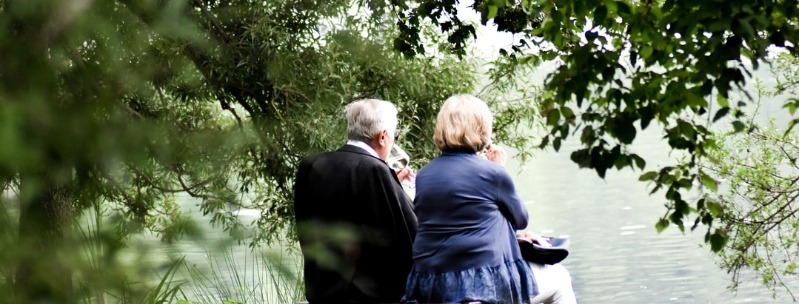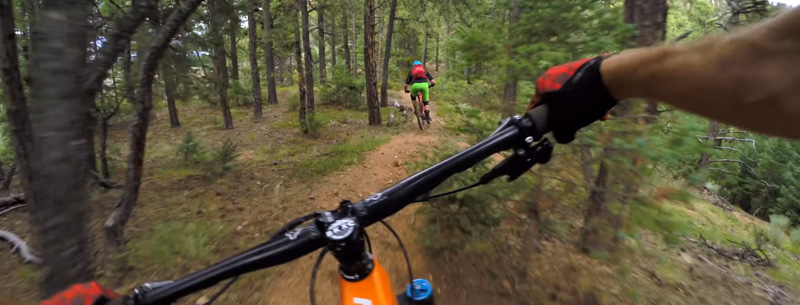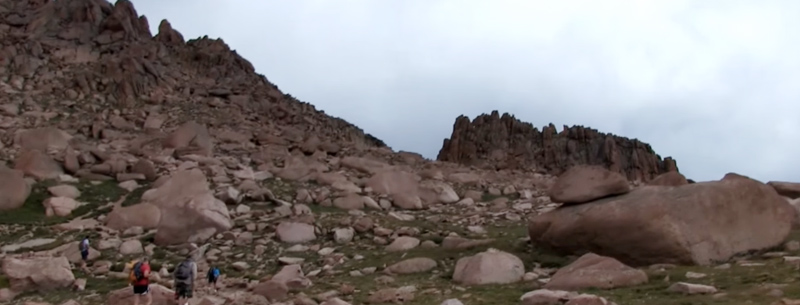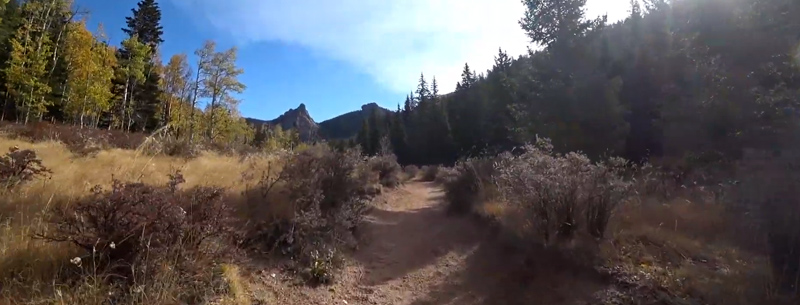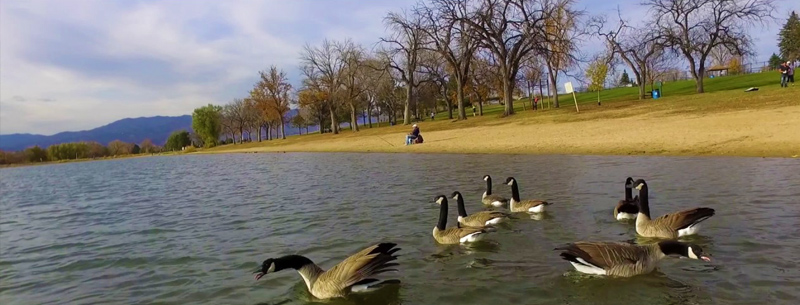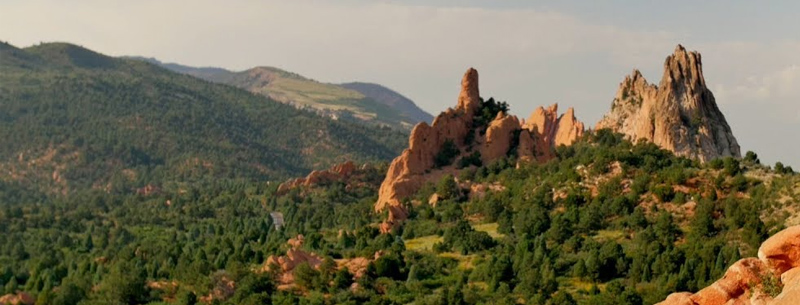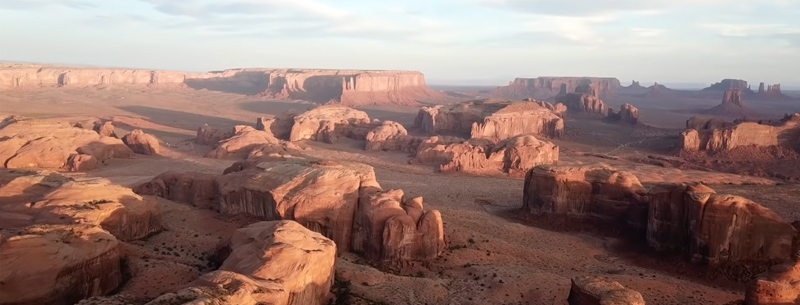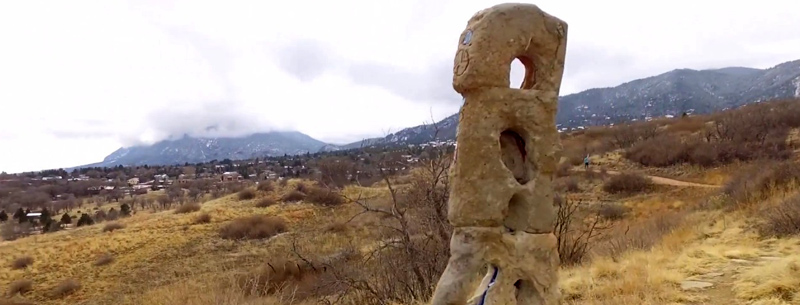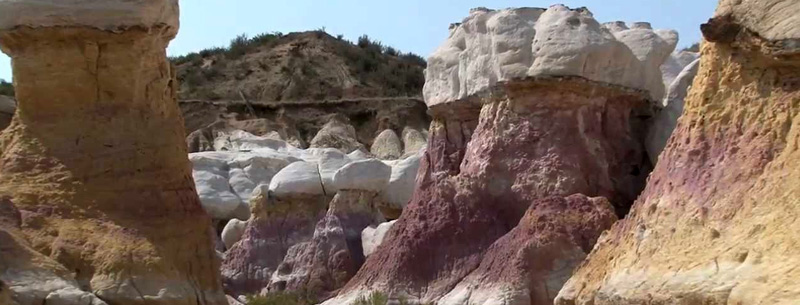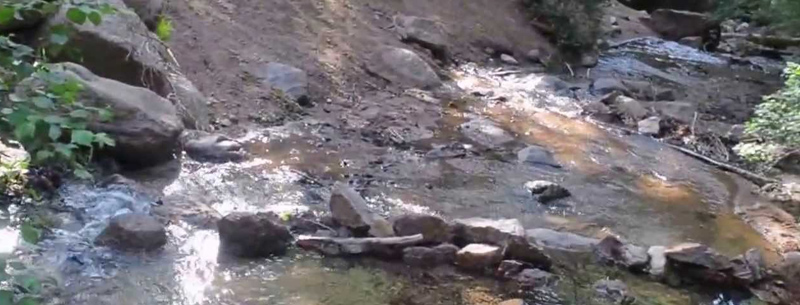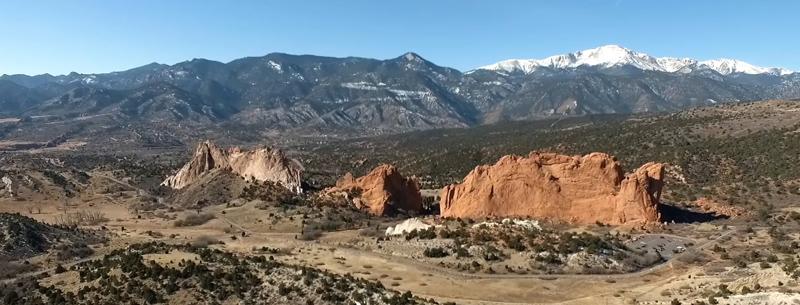2024 Colorado Springs Visitors Guide
The second-largest city in Colorado, Colorado Springs boasts a pleasant climate and an inspiring balance of leisure and industry. In 2017, the population of the metro area, not including all of El Paso County, was estimated to be 464,474 – an increase of more than seven percent over the 2000 census figures. Additionally, the region attracts seven million visitors annually. With two hundred and fifty days of sunshine annually in Colorado Springs, residents and visitors enjoy year-round outdoor recreation, mild summer evenings, and the intermittent gift of warm days even in winter.
Situated at the edge of the Rocky Mountains, where the eastern plains meet the Front Range and sheltered from Colorado’s most extreme weather by the mountains (including Pikes Peak, which, with its summit at 14,110 feet above sea level qualifies as one of Colorado’s famed Fourteeners) to the west and the Monument Divide to the north, Colorado Springs enjoys an average humidity of sixty-three percent in the morning and forty percent in the afternoon. Daytime high temperatures in July tend toward the low 80s. January low temperatures, averaging about thirteen degrees Fahrenheit, usually register in the very early morning hours. With an elevation of 6035 feet above sea level, the city receives about thirty-seven inches of snowfall per year, with the largest percentage of that falling in March. The annual melted precipitation total is between seventeen and nineteen inches.
Colorado Springs Attractions
The Cheyenne Mountain Zoo, with its breathtaking views that extend far out over the eastern plains of Colorado, is home to one of the world’s largest herds of captive giraffes. A thrill for many children who visit the herd in the zoo’s new African Rift Valley exhibit is the opportunity to see the animals’ long, grey tongues at close range, as they hand-feed them the special “Giraffe Crackers” (Rye Crisp).
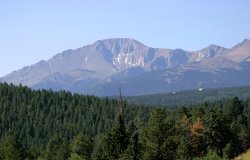
At 14,110 feet tall, Pikes Peak is the focus of many activities in the region. During the summer, the Cog Railway carries visitors to the summit. June sees the Pikes Peak Hill Climb auto race. Later in the summer, the Pikes Peak Marathon/Ascent is a foot race to the summit. Each year, traveling on the cog railway, hiking Barr Trail, or by car on the toll road, over four hundred thousand people visit the summit.
Garden of the Gods
The Garden of the Gods is the most popular natural site in the region, receiving some 1.7 million visitors annually. This geographical phenomenon of exposed sandstone formations is operated as a city park. Spectacular reddish-pink sandstone pinnacles and majestic sculpted rock formations are dramatically set against the outline of Pike’s Peak. This 1367-acre park is located west of Colorado Springs and has been a city park since 1909. Testimony to its great beauty and geological significance, it was designated a Registered National Natural Landmark in 1971. Rufus Cable, a co-founder of Colorado City, now a part of Colorado Springs, suggested in 1859 that the site was a fit place for the Gods to assemble, and it continues to be known as Garden of the Gods.
Pikes Peak International Hill Climb
The Pikes Peak International Hill Climb, known as “The Race to the Clouds”, is the world’s highest auto race and the second oldest auto race in the United States. Begun in 1916, this historic auto race now hosts an average of 150 competitors. A variety of automobile, truck, and motorcycle classes compete in a 12.4-mile race to the 14,110-foot summit of Pikes Peak starting at an elevation of approximately 9,400 feet. There are 156 turns on the route along the Pikes Peak Highway. Spectators drive to designated locations before 8:00 a.m. on the day of the race and must stay on the mountain until all the races are completed.
A FanFest celebrates this event in downtown Colorado Springs on the evening of July 19 with the Firefighter’s National Chili Cook-Off, a beer garden, live bands, and food and race merchandise vendors.
Annual Pikes Peak or Bust Rodeo
The Pikes Peak or Bust Rodeo originated in 1938 and is one of Colorado’s most important rodeo events, now sanctioned by the Professional Rodeo Cowboys Association (PRCA). The rodeo features traditional rodeo events such as steer wrestling, bareback broncs, tiedown roping, bull riding, saddle broncs riding, team roping, wild horse racing, and WPRA women’s barrel racing. As part of the PRCA circuit, contestants can qualify for the Wrangler National Finals Rodeo (WNFR) championship in Las Vegas. On July 7 a western parade celebrates the rodeo in downtown Colorado Springs, and on Saturday, July 14 a Chuck Wagon Cook-Off is held at the Norris-Penrose Event Center.
El Paso County Search and Rescue help to make outdoor life in the Pikes Peak Region safer and for both visitors and residents. As one of the best-trained, best-equipped, all-volunteer Mountain Rescue organizations in the West, they are who the Sheriff calls upon to manage most high-angle and backcountry rescues. For as much wild land as there is in El Paso County, the region’s record of safety is at least in part due to the altruism and unmatched skill of this organization.
Popular Culture
Colorado Springs has featured in science fiction beyond the writings of Robert Heinlein. War Games, the popular film from the early nineteen eighties, featured NORAD headquarters in the man-made stone vault inside Cheyenne Mountain, especially the enormous steel blast doors at the entrance. The television series Stargate SG-1, though filmed in the Vancouver, British Columbia area, tells the stories, set in the present day, of a special force based out of the same facility inside Cheyenne Mountain, and many of the characters are, in the series, said to have homes in Colorado Springs.
Colorado Restaurant Guide
There is little difficulty in finding a nearby restaurant in Colorado Springs, no matter where you are in the city, as there are more than thirteen hundred dining establishments in the area. However, a few stand out as worthy of mention because, though they may not be among the best-known in town or most often recommended to visitors, they should not be missed.
El Tesoro in the Depot Arts District just west of the Antlers Hotel and the Main Library downtown offers authentic regional Hispanic cuisine. Generally referred to as Santa Fe style or Northern New Mexico cuisine, the description Southern Colorado cuisine might be applied just as fairly. Many of the featured menu items descend from the ancestral kitchens of the San Luis Valley of Colorado, one of the richest areas of farmland in the American West.
Blue Star on the far south end of Tejon Street is a miracle of gracious negotiations among assertive ingredients. With a nouvelle cuisine quality of innovation and adventure, the food is by no means inaccessible. Anything they do with salmon is spectacular; the salads are exciting, and the dessert options are so varied and appealing that there is an authentic moment of quandary before making any decision about how to end a meal at Blue Star.
Just about anyone in Colorado Springs would be happy to explain the city and its moods and preferences to you, but every explanation would differ. It is a city in which business and the arts, the military and the Olympics, longtime resident and relative newcomer, and even people of diametrically opposed political views can co-exist, at times quirkily, but peaceably and with a more generous helping of respect than can be found in many other corners of America.
Colorado Springs Sports
The Colorado Springs Sky Sox are the local AAA ball club, affiliated with Denver’s Colorado Rockies. Colorado Springs is also known for its rodeo events, The Pikes Peak or Bust Rodeo and the Lil’ Britches Rodeo for child competitors.
Colorado Springs is also home to the World Arena, a modern versatile events venue that places special emphasis on its ice facilities for training, competition, and performance by skaters. It is a successor facility to the Broadmoor World Arena which had a long tradition of champion-level training and competition.
Getting to Colorado Springs
Colorado Springs has its own airport, near the southern edge of the city, with approximately one hundred flights daily. Denver International Airport is also readily accessible, without having to pass through Denver traffic, via U.S. highway 83 (Parker Road) and the toll loop E-470 (passing two tollbooths between Colorado Springs and the airport, with a payment of $1.75 at each booth for a regular two-axle passenger car).
Famous Residents of Colorado Springs
Colorado Springs was home to the inventor Nikola Tesla and the Van Briggle Art Pottery works, as well as the authoress Helen Hunt Jackson, for whom Helen Hunt Falls in North Cheyenne Canon is named. It is the birthplace of Lon Chaney (born April 1883), for whom the Lon Chaney Theatre in the downtown area is named, and of Bobby Unser (born February 1934). The view from Pikes Peak inspires Katherine Lee Bates to write “America the Beautiful”. Robert Heinlein, often spoken of as the Dean of Science Fiction Writers, and his wife Virginia built a house near the Broadmoor Hotel. The automated house was a design marvel for its day and was featured in an issue of Scientific American. Heinlein is believed to have written much of his masterwork Stranger in a Strange Land in the home. He also wrote several other books in Colorado Springs, including Farnham’s Freehold, which has as its setting the neighborhood around the house and Cheyenne Canyon.
History of Colorado Springs
The television series Dr. Quinn, Medicine Woman claimed Colorado Springs as its setting, but the city’s early days could scarcely have been more different than the highly fictionalized account in the series. Never a rough frontier town nor even, truly, a mining town, Colorado Springs was, from its founding, a planned community. It was platted and established by General William Jackson Palmer (1836-1909) in 1871, relatively early in his railroad career. He was an incongruous character. A Delaware-born Quaker who abhorred violence and strong drink, he enlisted as a colonel on the Union side in the Civil War when his abolitionist politics outweighed his distaste for warfare. He served as an intelligence officer in the 15th Pennsylvania Volunteer Cavalry. He was captured and spent part of the war as a Confederate prisoner of war. Released in a prisoner exchange, he served throughout the conflict with distinction and was ultimately rewarded with a Congressional Medal of Honor and retired from military service at the rank of Brevet Brigadier General. Early in 1870, he founded the Denver and the Rio Grande railroad, with a relatively short line from Denver to Pikes Peak.
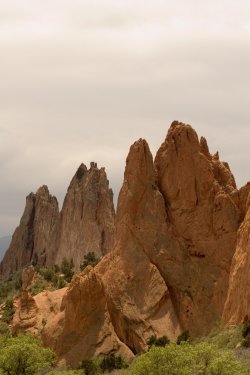
In the fall of that year, during his honeymoon to the British Isles, he saw a narrow-gauge railroad in operation for the first time. In 1871, he introduced a narrow gauge rail transit to the American West. This innovation allowed cost-effective rail access to the mining communities high in the Colorado mountains and established Colorado Springs as a railroad destination. Among the early visitors were sightseers enchanted with the landscape and tuberculosis patients who were advised by their doctors to seek “the prairie cure” of pure food, sunshine, and clean air. The city quickly became a preferred place of residence and leisure travel destination for those lucky few who made millions in mining speculations. This paved the way for the establishment of the now world-famous Broadmoor resort and the Antlers Hotel. Late in the nineteenth and early in the twentieth century, Colorado Springs was a western playground for the wealthy elite. Nicknamed “Newport in the Rockies”, it became a polo-mad gathering place for minor European nobility, presidential families, and captains of Eastern industry, as well as those who struck it rich on gold and silver anywhere from the Bay Area to Virginia City, Nevada, to Colorado’s own mining towns of Cripple Creek, Victor, and Leadville.
The Broadmoor Hotel was originally located beyond the city limits, though it was eventually annexed along with surrounding neighborhoods in the early 1980s. There was good reason for it to begin outside of the city, as the Broadmoor was an Edwardian-era casino before it was a hotel, and part of General Palmer’s plans for the city banned gambling establishments and saloons in Colorado Springs. Anyone who wanted to purchase alcohol had to look either to the outlying hotel or to the older and more unruly mining supply town of Colorado City (now the charming historic district known as Old Colorado City) to the west or to the nearby Manitou Springs. The sale and production of alcohol in Colorado Springs were not permitted until the repeal of Prohibition in 1933. Whether a jibe or a tribute to the city’s dry days and abstemious founder, the Phantom Canyon microbrewery opposite today’s Antlers Hotel features a light beer produced on-site called Queen’s Blonde Ale, named for Palmer’s wife Mary Lincoln “Queen” Mellen Palmer who, a twenty-one year old newlywed, founded the first school in Colorado Springs. Queen Palmer Elementary School also bears her name.
